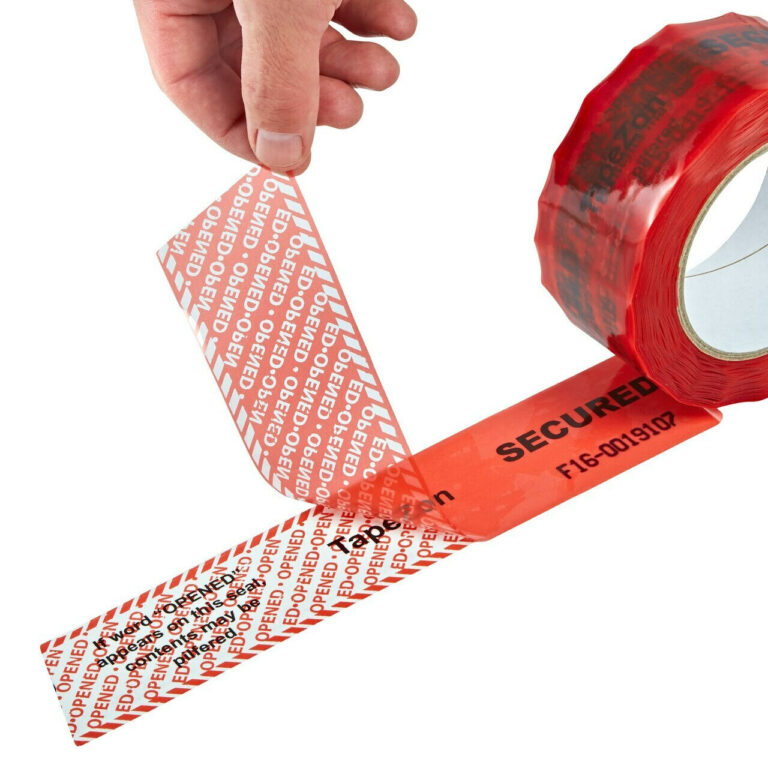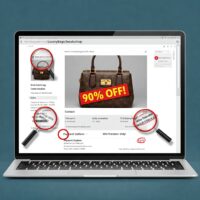Consumer Fraud Alert: Protecting Yourself from Malicious Product Tampering
In today’s fast-paced world, consumers rely heavily on the safety and security of the products they purchase. Unfortunately, a growing threat lurks in the aisles: product tampering. This malicious act involves altering products after they’ve left the manufacturer, potentially causing harm to unsuspecting consumers.
While tampering incidents are thankfully rare, they can have devastating consequences. This article will explore what product tampering is, the dangers it poses, and how you can protect yourself as a consumer in 2024.
What is Product Tampering?
Product tampering refers to the intentional modification of a product in a way that compromises its safety. This can involve introducing harmful substances, inserting foreign objects, or even replacing the product altogether with a counterfeit.
Motives for Tampering
The motivations behind product tampering can vary. In some cases, perpetrators aim to cause harm to consumers, driven by revenge or malice. Others might tamper with products for financial gain, such as through extortion attempts. Sadly, some tampering incidents involve mentally unstable individuals seeking notoriety.
The Dangers of Tampering
Tampering can pose a serious threat to consumer health and safety. Contaminated products can lead to illness, injuries, or even death. Beyond physical harm, tampering can also erode consumer trust in brands and products.
The Evolving Threat: Types of Tampered Products in 2024
Product tampering is a disturbing and potentially dangerous act that continues to evolve. While still relatively uncommon, its unpredictable nature makes it a persistent concern for consumers and brands alike. As we move further into 2024, let’s explore the different forms tampering might take:
1. Physical Tampering:
- Damage and Foreign Objects: This classic form of tampering involves physically damaging the product’s packaging or introducing foreign objects (glass, needles, etc.). The goal is often malice or to create panic and distrust.
- Counterfeiting: Complete replacement of a genuine product with a fake version. Counterfeit goods can be harmful due to substandard ingredients, especially concerning pharmaceuticals and cosmetics.
2. Chemical Contamination:
- Introduction of Toxins: Deliberate addition of harmful chemicals, poisons, or other substances to food, beverages, or over-the-counter medications. These attacks can be widespread and difficult to detect.
- Allergen Contamination: Introducing undeclared allergens into food products. This can pose serious, even life-threatening, risks for those with severe allergies.
3. Cyber-Tampering (The Future Threat)
- Manipulation of Smart Devices: As connected “smart” products become the norm (think medical devices, household appliances), there’s potential for malicious hackers to tamper with their software, causing them to malfunction or pose security threats.
4. Biological Threats
- Intentional Contamination: While less likely than other methods, the possibility exists for deliberate introduction of pathogens (viruses, bacteria) into products. This could cause wide-scale health crises.
Protecting Yourself
- Scrutinize Products: Always examine packaging for unusual openings, tears, holes, or signs of resealing. Be wary of damaged safety seals.
- Source Matters: Trust reputable retailers and brands known for their quality control. Avoid suspiciously discounted products.
- Tech Awareness: With smart devices, keep your firmware updated and follow security best practices to reduce hacking risks.
- Report Oddities: If you notice anything strange about a product, don’t consume or use it. Notify the store, the manufacturer, and potentially regulatory agencies.
Important: Tampering can take diverse forms that exploit technology advancements alongside traditional methods. Staying informed through reputable news and consumer safety information sources is key.
How to Protect Yourself
Product tampering is an unpredictable threat, but staying vigilant and informed can dramatically reduce your risk. While we can’t eliminate the risk entirely, here are some steps you can take to protect yourself from tampered products:
1. The Power of Inspection
- Packaging Scrutiny: Before purchasing anything, closely examine the packaging. Look for damage, unusual openings, leaking containers, or signs that a tamper-evident seal has been compromised.
- The ‘Feels Off’ Factor: Don’t hesitate to trust your gut instinct. If a product’s appearance, texture, or smell seems unusual, put it back.
2. Source Smarts
- Choose Reputable Retailers: Stick to established stores and trusted brands. They have greater incentive to maintain rigorous supply chain security and quality control measures.
- Resist Shady Deals: Products with prices that appear too good to be true often are. Counterfeits flourish in bargain-focused marketplaces.
3. Tech Awareness
- Stay Updated: For connected smart devices, ensure you install firmware updates as soon as they’re released. These often contain security patches.
- Smart Security: Follow best practices for strong passwords and be wary of connecting your devices to public or untrusted networks.
4. Stay Informed
- News & Alerts: Utilize reliable sources like government agencies (think FDA, or the equivalent in your country) and reputable news outlets for timely updates on recalls or tampering threats.
- Brand Communication: Many brands will issue direct warnings or use social media for quick public communication in the case of a tampering incident.
5. When in Doubt, Report It
- Alert the Authorities: If you come across a product you truly believe has been tampered with, don’t simply discard it. Notify the retailer, the manufacturer, and potentially the relevant regulatory agency in your area.
- Evidence Matters: If possible, safely retain the product and its packaging. This can aid in any potential investigations.
Bonus Tip: Consumer Advocacy in 2024
Support consumer groups and organizations that actively fight against product tampering and advocate for stricter regulations and safety measures. Your voice, alongside others, can drive positive change.
Remember: No system is foolproof. However, by layering these strategies, you create a strong defense grid, making yourself a far less appealing target for tampering attempts.
Product Tampering: Don’t Be Silent – Your Guide to Reporting and Protecting Others
If you ever come across a product that you believe has been intentionally tampered with, it’s crucial that you don’t just ignore it. Your actions could protect others from potential harm and assist authorities in catching the perpetrators. Here’s your roadmap for reporting product tampering:
1. Start at the Source
- Retailer: If you discovered the suspected tampering at a store, immediately alert the store manager or a customer service representative. They can secure the product and potentially prevent others from purchasing it.
- Manufacturer: For tampering discovered after purchasing, contact the product’s manufacturer directly. Their customer service lines or websites should have reporting mechanisms in place.
2. Determining the Right Government Agency
The type of product determines which agency has jurisdiction:
- Food (Excluding Meat & Poultry): In the United States, contact the Food and Drug Administration (FDA). Use their online reporting systems, call their 24-hour emergency line (1-866-300-4374 or 301-796-8240), or find local FDA branch contact information.
- Meat, Poultry, Processed Eggs: The United States Department of Agriculture (USDA) handles these products. Utilize their hotline (1-888-674-6854) or find online reporting systems.
- Medications (Prescription and Over-the-Counter): Again, the FDA is your point of contact. Use their reporting channels specific to medications.
- Other Products: For non-food, non-medicine items (toys, appliances, etc.), start with the Consumer Product Safety Commission (CPSC) for reporting guidance.
Important Note: Regulations differ between countries. Always research the equivalent agencies for your location.
3. The Power of Precise Reporting
To assist the proper authorities, provide as much detail as possible:
- Product Information: Brand, type of product, lot numbers, expiration dates, where the product was purchased.
- Details of Tampering: Describe exactly what makes you believe the product was altered (broken seals, unusual smells, foreign objects, etc.).
- Retain Evidence: If safe, retain the product and packaging. Do not use or consume it!
- Your Contact Info: Leave a way for authorities to follow up if they need additional information.
Additional Considerations
- Serious Threats: If the tampering incident seems severe or poses an immediate health risk, don’t hesitate to contact your local law enforcement as well.
- Online Reporting: Many government agencies offer online reporting forms alongside hotlines. Use what’s most comfortable for you.
Why Your Report Matters
- Stopping the Threat: Your vigilance could prevent further incidents and lead to the apprehension of those responsible.
- Trend Identification: Even seemingly minor reports help agencies track patterns of tampering, targeting specific brands or product types.
Remember: No suspicion is too small. If something feels wrong, it is always better to err on the side of caution and report it!
Staying Informed
By staying informed about product tampering incidents, you can be more vigilant as a consumer. Look for reputable news sources and government agency websites for updates on product recalls and tampering threats.
The Role of Manufacturers and Retailers
Manufacturers and retailers also play a crucial role in combating product tampering. Investing in tamper-evident packaging, robust security measures, and clear communication with consumers during product recall situations are essential.
Conclusion
Product tampering is a serious threat, but by working together, consumers, manufacturers, and retailers can help keep our products safe. By following the tips above and staying informed, you can be a more aware and empowered consumer in 2024.
Remember: When it comes to your safety, it’s always better to be safe than sorry.
















